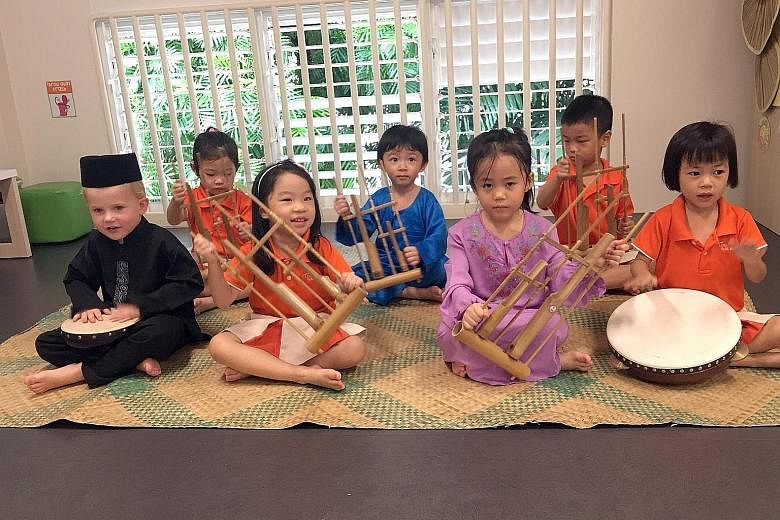The awareness of race and the preference for one's own race over another can start from as early as the age of three, a new study has found.
Assistant Professor Setoh Pei Pei from Nanyang Technological University, who led a year-long study on racial identity and bias among pre-schoolers, said that as soon as children start learning labels, they become aware of the different races. They get better at categorising races as they get older, she said in an interview with The Straits Times earlier this month.
She added that her research is meant to be the groundwork for more studies and work in anti-bias education for pre-schools. Prof Setoh has started work on this, through a three-year government-funded project on early intervention approaches for pre-schools.
According to her study, young Chinese children here tend to favour their own race while their Indian peers have no particular bias.
The study, believed to be the first here that looks at racial bias at an early age, was published in a worldwide academic journal, Child Development, in June.
For a start, it compared pre-schoolers from the Chinese and Indian races, and Prof Setoh plans to include Malays in the next two to three years. Other local studies have analysed gender stereotypes.
The study examined explicit bias, which refers to attitudes, stereotypes and discrimination expressed through one's thoughts and actions, as well as implicit bias, which a person might not even be aware of.
Data collection involved face-to-face individual interviews with 158 children - 87 Chinese and 71 Indians - from more than 10 pre-schools. The children were aged three to six.
They completed three tasks - the first involved matching different faces to the two races, while the next measured their response time in associating positive and negative stimuli - using a smiley cartoon face and a sad face - with photographs of people from both races.
In the third task, the children were given the choice of an adult from each race and asked to pick whom they preferred as their music teacher, doctor or swimming coach, for instance.
Prof Setoh said the results found that the more proficient children are in assigning race labels to faces, the higher their implicit bias in favouring their own race.
Most of the children in her study could categorise the races correctly, with both Chinese and Indians on par in the task.
"If you can't categorise yet, you can't have a bias," she said, adding that children start being aware of the different races at the age of three when they learn the labels, and get better at categorising as they get older.
In the second task, Chinese children were quicker in associating positive stimuli with faces of their own race, while the Indian children did not show any favouritism towards any race.
In the last task, Chinese children chose the Chinese adult more than half of the time, whereas Indian children had no obvious preference.
Prof Setoh said the study found that Chinese children tend to favour their own race, probably because they are the majority racial group in Singapore.
"We think it's a matter of familiarity and exposure. Being a majority group, the Chinese pre-schoolers are more exposed to people of their own racial group. And children have a preference for more familiar categories," she said.
She noted that parents and pre-schools should educate children from a young age on inter-group harmony, for instance, encouraging more interaction across races.
To this end, she is working on another study, funded by the Social Science Research Council, to come up with materials for pre-schools, such as designing storybooks that familiarise children with other races. This project started this year and involves at least 300 children from 30 My First Skool centres.
Currently, pre-schools incorporate elements of multiculturalism in play and lessons, said Prof Setoh.
"But we often teach children about distinct ethnic practices, festivals, food and costumes of different races. And this is kind of a way of categorisation too," she added.
"It's saying these people do this and these other people do that. And this will probably speed up your categorisation abilities. This could be counterproductive in the long run."
Parents and teachers also need to expose children to more friends of other races, for example, by opening up their circle of friends in playgroups, "so they can learn about their friends as individuals and not from descriptions in books or celebrations during particular events".
Another way is to expose children to more positive examples from other races, she said. This method has proven to be effective in studies in the United States.
Corporate communications officer Jamie Chan, 35, said her two daughters, aged six and eight, happened to be exposed to Indian families from a young age in her neighbourhood and their schools. They eventually came to have good friends who are Chinese and Indian, she added.
"Parents tend to group together according to their races... but we must be open to make friends from different race and religious backgrounds, otherwise we become closed off, judgmental and not accepting of other people," she said.


